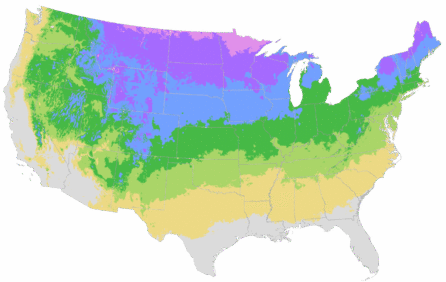You're growing in this Zip Code:
Change LocationDiscover Plants for Your Area
Black Hills Spruce
Picea glauca 'Densata'
Retailers Near You
No Retailers found within 100 miles of your zipcode
| Bloom Time | Conifer; prized for foliage. |
|---|---|
| Deciduous/Evergreen | Evergreen |
| Special Features | Easy Care, Fast Growing, Compact Form, Benefits Birds |
| Problems/Solutions | Deer Resistant, Rabbit Resistant, Drought Tolerant, Road Salt Tolerant |
| Growth Rate | Moderate |
| Landscape Use | Privacy Screen, Windbreak |
| Design Ideas | This is a useful mid-sized blue-colored spruce that works perfectly in the suburban landscape. Use as background foliage for colorful seasonal plantings. A great candidate for naturalistic woodlands needing a reliable conifer that won't spread out too much. Consider it as a single specimen for semi-formal schemes or exploit its columnar form by planting matched pairs in symmetrical landscapes. Dense and rugged enough for small windbreaks at backyard scale or to flesh out larger Midwestern shelterbelts. |
| Foliage Color | Green |
| Companion Plants | Fountain Grass (Pennisetum); Smoke Tree (Cotinus); Potentilla (Potentilla); Dwarf Ninebark (Physocarpus); Salvia (Salvia) |
| Care Instructions | Grows easily in moist, slightly acidic, loose, sandy or gravelly loam to fine clay soils. Thrives in cold winter, cool summer areas. Water deeply, regularly in first growing season to establish an extensive root system. Once established, reduce frequency; tolerates mild drought. Fertilize in early spring. Slow growing; no pruning necessary. |
| History | The Black Hills Spruce (Picea glauca densata) is the state tree of South Dakota. It is found naturally only in southwest South Dakota and a small portion of northeast Wyoming, and is the only spruce native to the Black Hills region. |
| Lore | Plains Indians used the inner bark and shoots of the Black Hills Spruce for food and the hardened sap for gum. The trunks were used for tipi poles. The small tan cones that arrive in summer and persist into early winter produce seed that is a valuable food source for songbirds and small mammals, while the bark is palatable to porcupines and the foliage is occasionally browsed on by deer. |
| Bloom Time | Conifer; prized for foliage. |
|---|---|
| Deciduous/Evergreen | Evergreen |
| Special Features | Easy Care, Fast Growing, Compact Form, Benefits Birds |
| Problems/Solutions | Deer Resistant, Rabbit Resistant, Drought Tolerant, Road Salt Tolerant |
| Growth Rate | Moderate |
Retailers Near You
No Retailers found within 100 miles of your zipcode
Retailers Near You
No Retailers found within 100 miles of your zipcode
Buy Online
We cannot currently ship this product to your zip code.
About Us
We have been pioneers and craftsmen in the art of growing plants for nearly
100 years. Since our founding in Southern California by Harry E. Rosedale, Sr.
in 1926, we have been absolutely dedicated and obsessed with quality.
We have been pioneers and craftsmen in the art of growing plants for nearly 100 years. Since our founding in Southern California by Harry E. Rosedale, Sr. in 1926, we have been absolutely dedicated and obsessed with quality.







